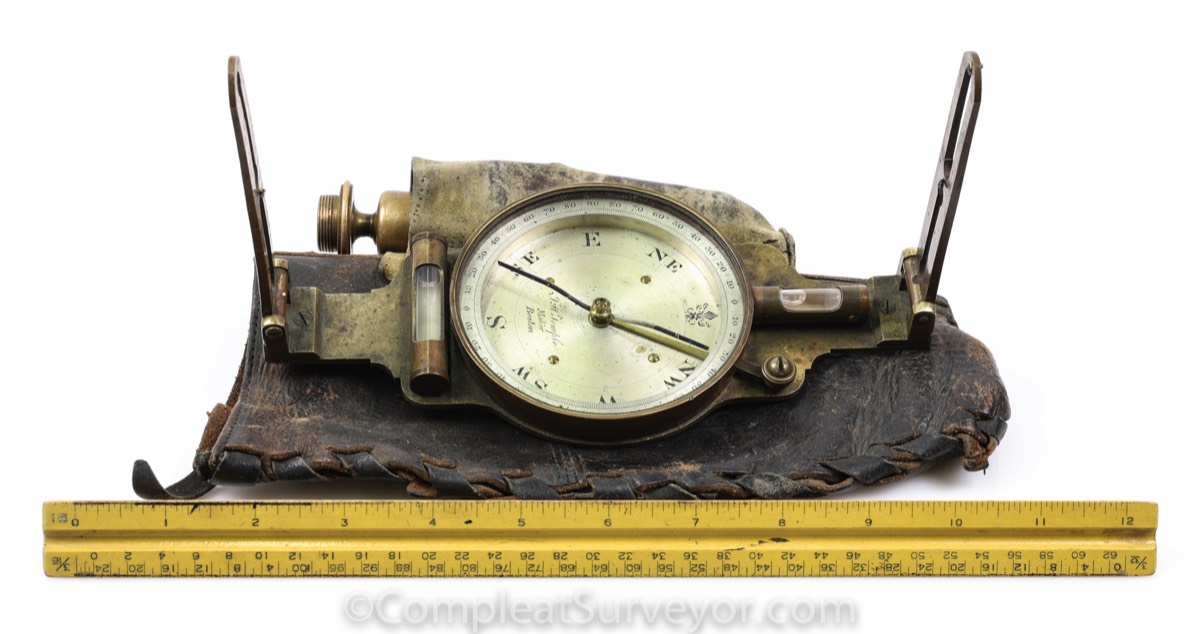
John H Temple
History
John Temple is one of the more fascinating instruments makers. Not well known by most collectors, he was considered to be one of the best makers in his time. And he didn't make very many instruments.
For example, when California went to determine its border with Nevada, CA searched for the most precise transit available. CA opted for a Temple Transit. See the yellow highlighted text below where the surveyor in charge talks about the Temple Transit, which he calls "a model of superior workmanship".
Among other things, Temple crafted the most precise dividing engine made by a surveying instrument maker at that time - the only match was a dividing engine owned by the U.S. government. Temple's dividing engine could divide to 15 seconds. Temple's divining engine would be used by Buff & Berger and then by Berger for decades afterwards.
Excerpts from Buff & Berger Catalog of 1879
Among the lesser known but more significant American 19th century makers of surveying instruments was a Massachusetts farm boy named John Hapgood Temple. John H. Temple was born in Princeton, Massachusetts on October 4, 1812, and died in West Roxbury, July 25, 1877. Leaving the farm at eighteen, he engaged in Sterling, Massachusetts in the manufacture of chairs; at twenty (1832) he entered the service of Nathan B. Chamberlain, maker of philosophical instruments, and soon came with him to Boston, working with him two or three years; then commencing business for himself about 1838, he began the manufacture of philosophical and school apparatus, and afterwards that of mathematical instruments. He is first listed in the Boston directories of 1839 at 11 Cornhill. In 1866 he moved to West Roxbury, where he remained until his death. During his lifetime he built about one hundred instruments, mostly transits and levels. Finding great difficulty in getting the circles for his instruments satisfactorily divided, he became impressed with the idea that he could make an engine that would do his work better than he could get it done elsewhere. After giving the subject much thought, he began the construction of a thirty-six inch dividing engine about 1852. He had never seen a dividing engine, and so far as known, never saw any other than that he made. He spent all his spare time for twenty years, many sleepless nights, and much money upon his engine, but had the satisfaction of using it for dividing his instruments for a few years after completion.
Mr. Temple was, without question, the finest workman in his department in this country, and in his engine he will live to future generations.
Buff & Berger acquired Temple's dividing engine to divide their instruments.
Pictured below is the vernier of a circa 1866 15 second Temple transit - a stunningly accurate instrument compared to other transits made during the same era.
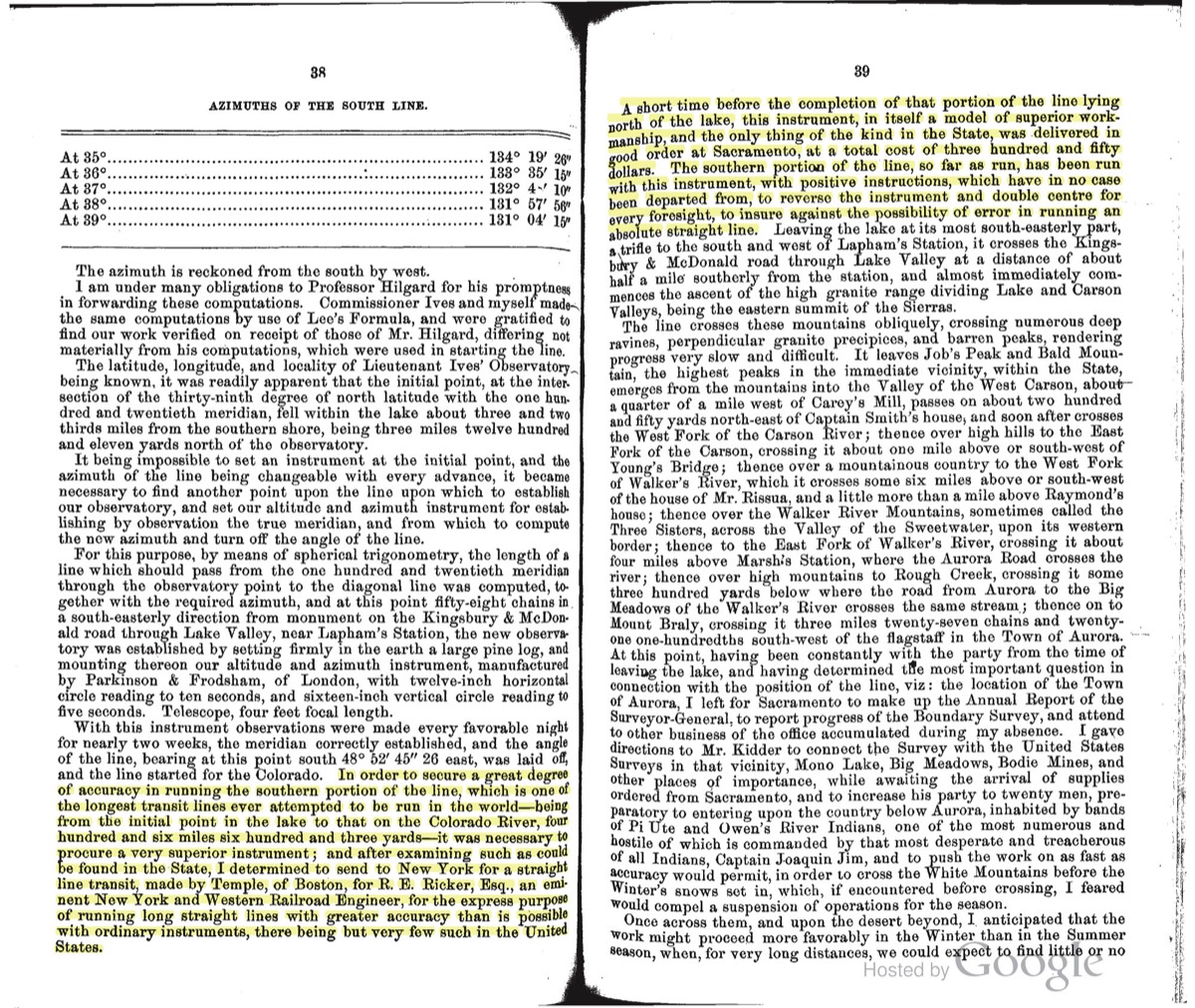
Article

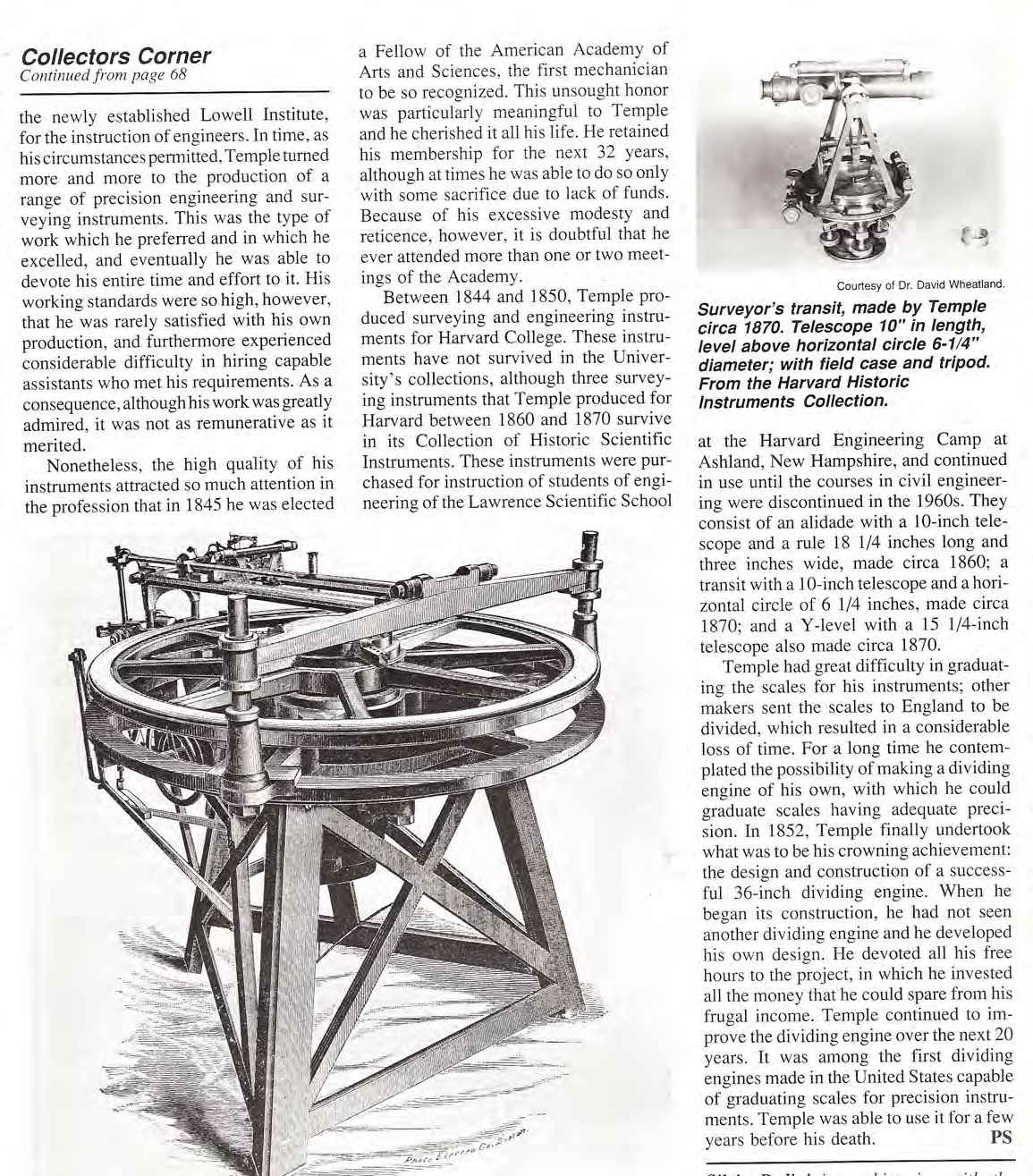
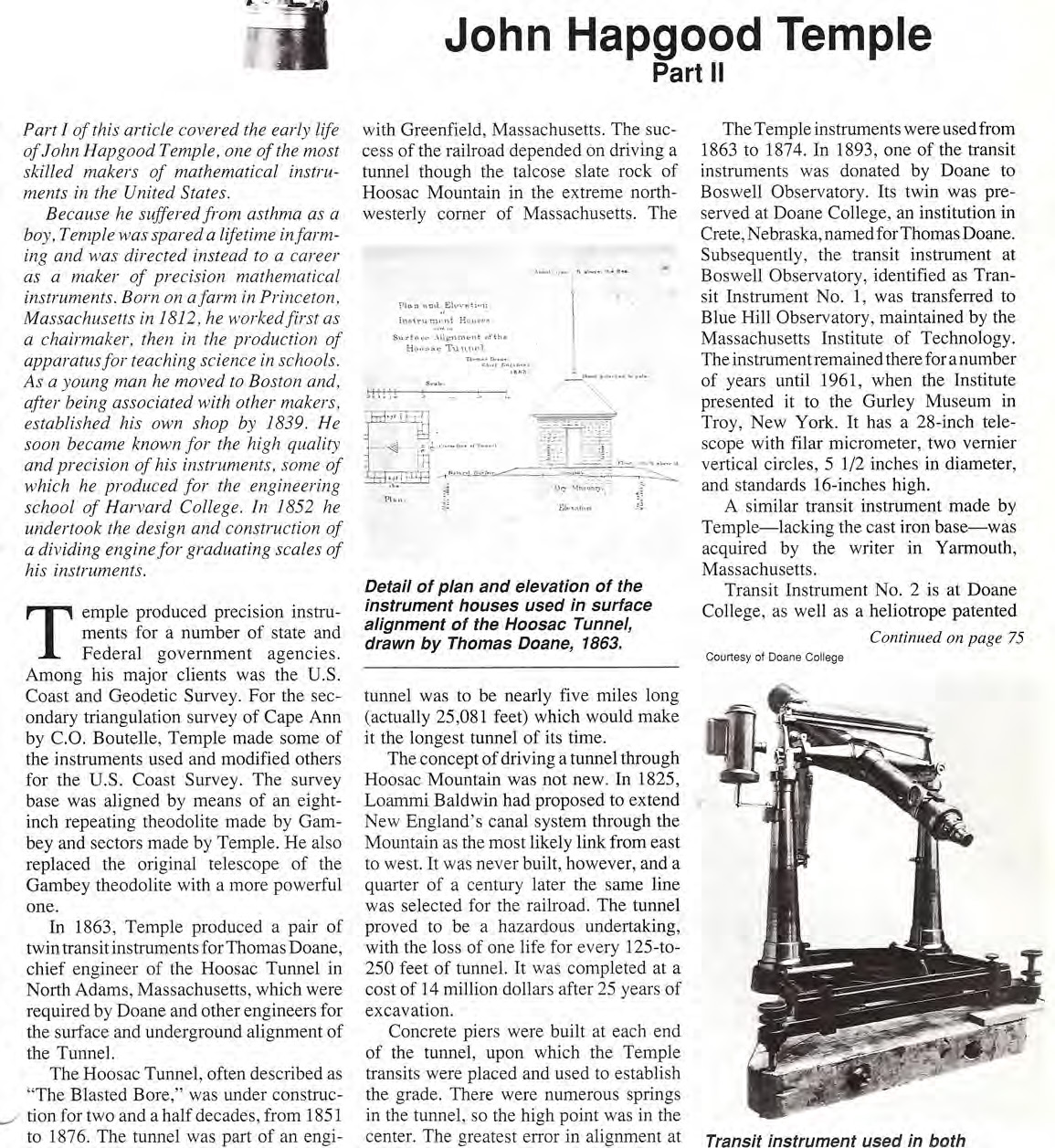
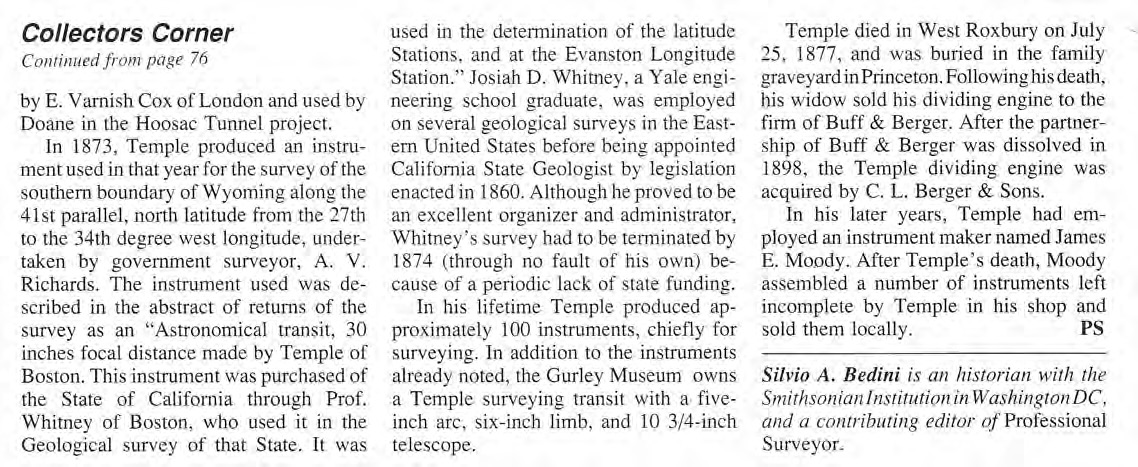
Additional Pictures

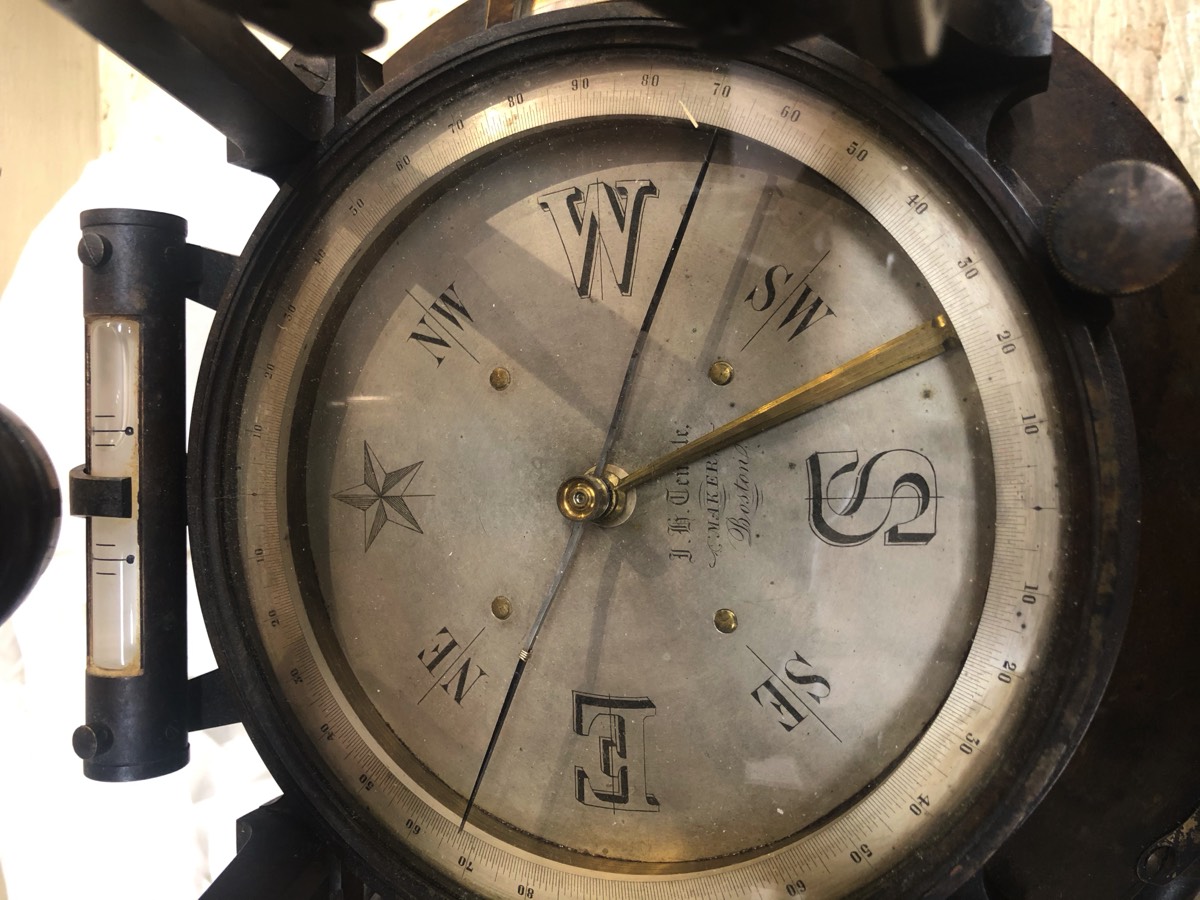
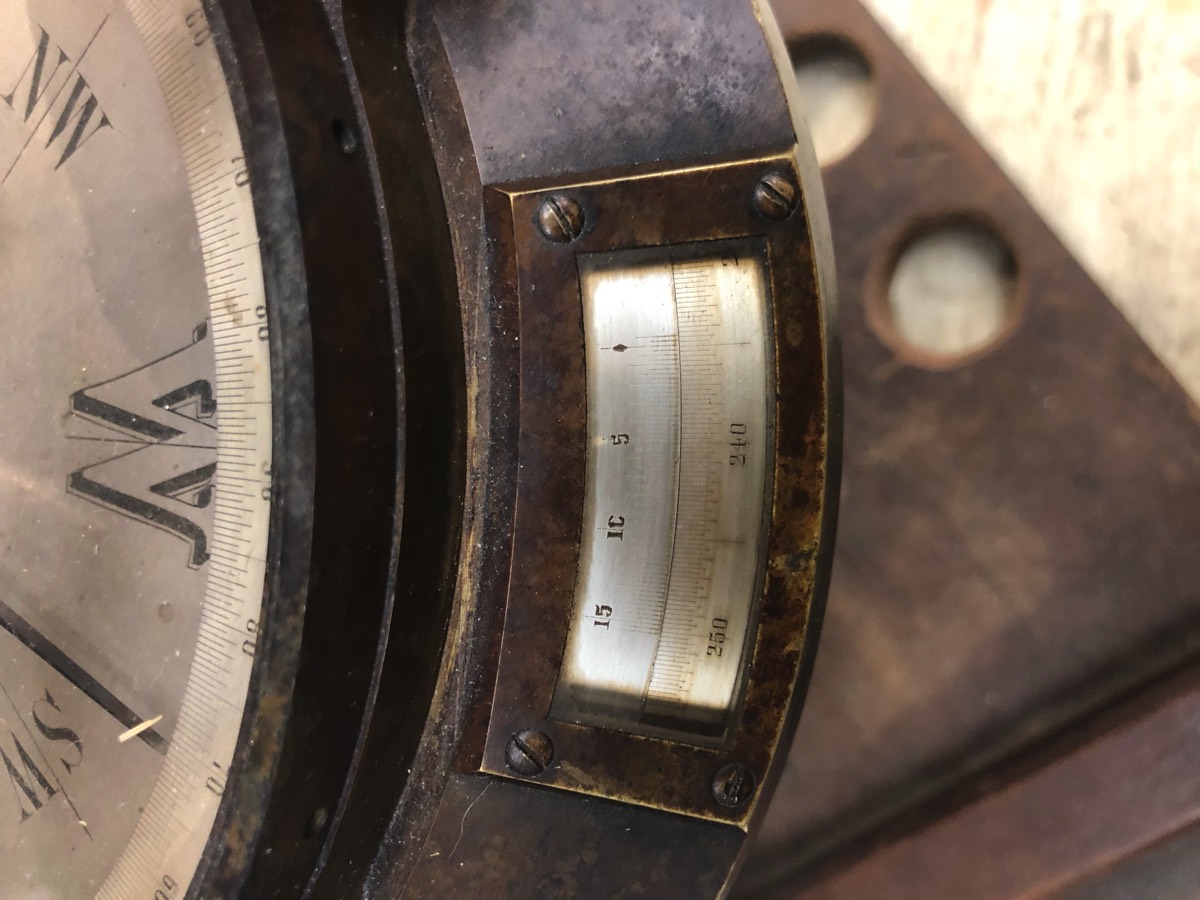
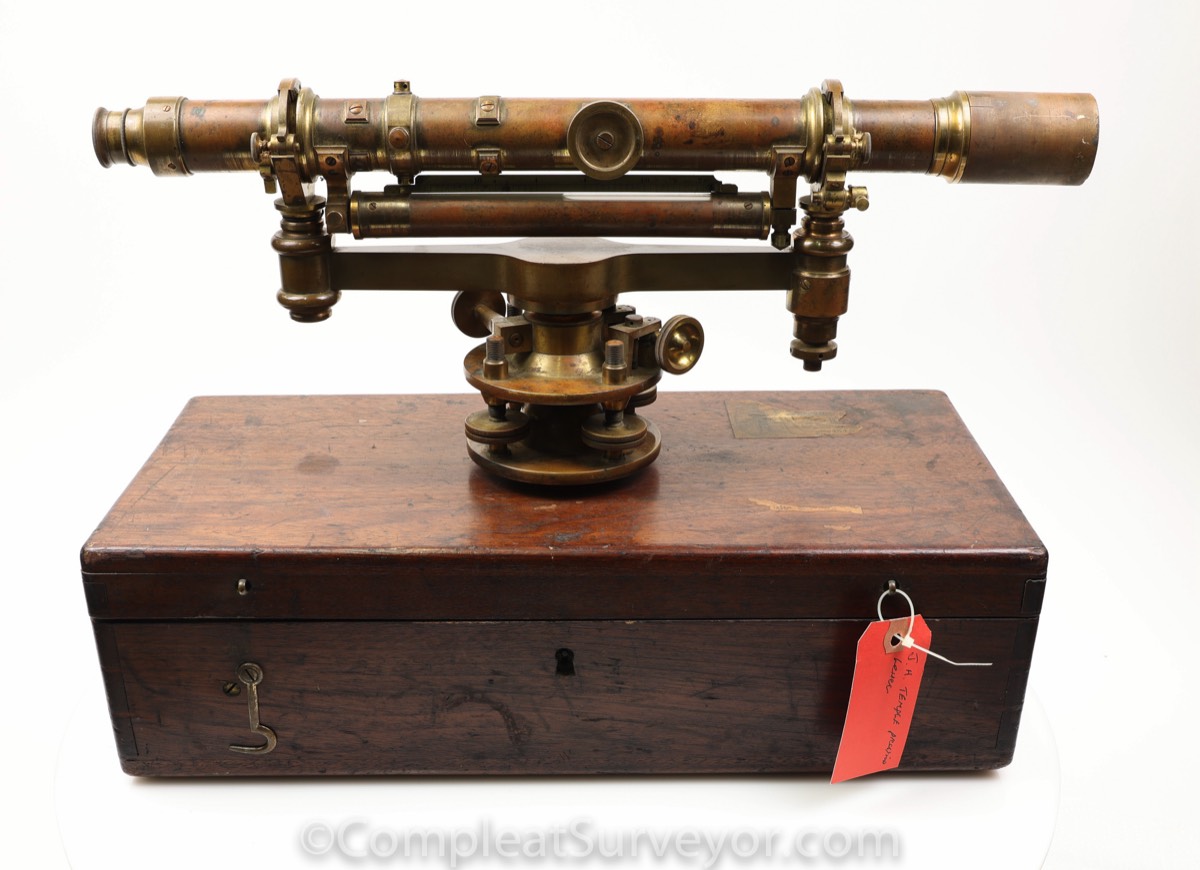
© 2020 Russ Uzes/Contact Me